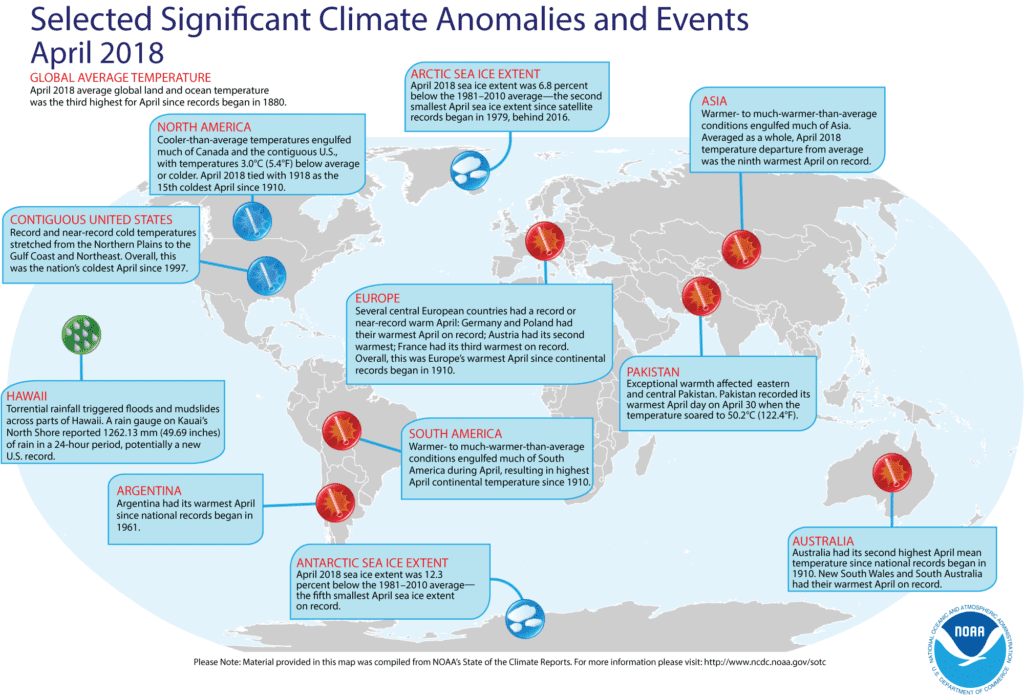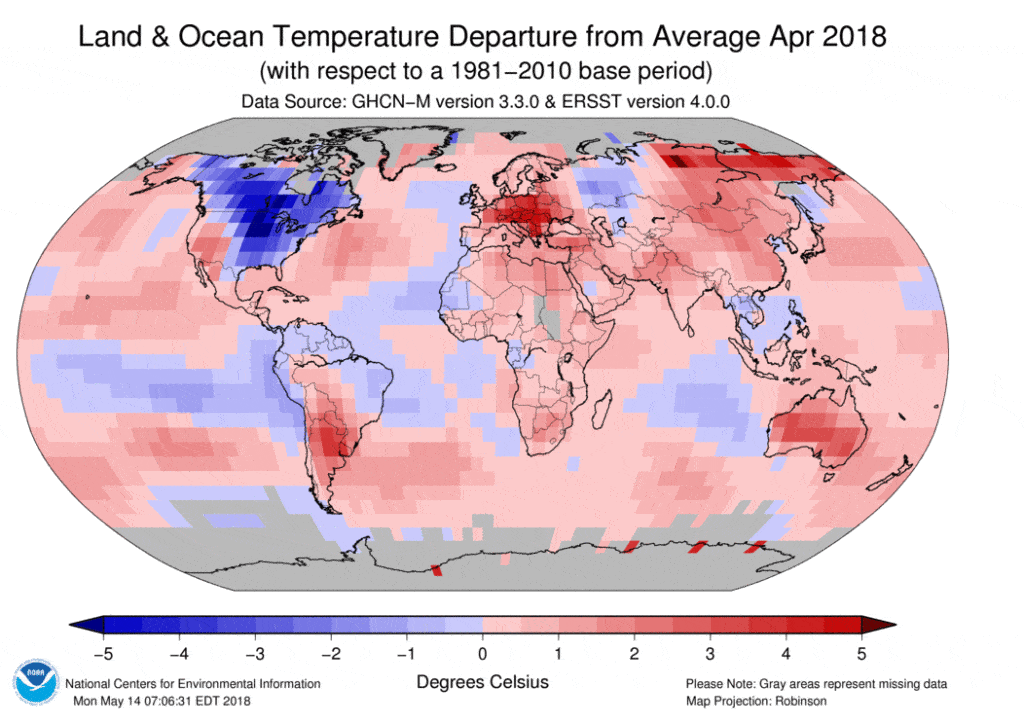Image credits: NOAA.
According to the last monthly climate report published by the National Oceanic and Atmospheric Administration (NOAA), the Earth has had about 33 years of above-average temperatures. The last colder-than-average month (across land and ocean surfaces) was recorded in December 1984, during US President Ronald Reagan’s second term.
The document also notes that April 2018 was the third-hottest April NOAA ever recorded since it started gathering climate data in 1880. Nice of the top ten warmest Aprils on record have now occurred since 2005, it adds. The root cause is, unequivocally, human activity.
“It’s mainly due to anthropogenic (human-caused) warming,” NOAA climatologist Ahira Sanchez told CNN. “Climate change is real, and we will continue to see global temperatures increase in the future.”
We’ve made real effort to decouple from the use of fossil fuels and reduce emissions in the last few years. However, little headway has been made so far. Developed countries are seeing significant push-back at multiple levels of society: government lobby in favor of oil, gas, and coal; faulty, pro-fossil scientific papers; a gross manipulation and politicization of the issue in the eyes of the public.
Developing nations are also arguing for their right to increase emissions, as they want to mirror richer countries and rapidly expand their economies, technological base, and population through the use of fossil fuels.
To see how the climate is faring, the team used 20th-century average measurements as a benchmark value. This allowed them to set a standard to compare today’s conditions against. At the same time, it allowed them to account for natural climate variability. The results show that every month in the last few decades showed higher than average temperatures “by whatever metric,” according to NOAA climate scientist Deke Arndt.

“We live in and share a world that is unequivocally, appreciably and consequentially warmer than just a few decades ago, and our world continues to warm,” Arndt adds. “Speeding by a ‘400’ sign only underscores that, but it does not prove anything new.”
The gross of the overall emissions comes from developed countries — that’s how they became developed in the first place, by burning fossil fuels. Still, presently, the bulk of emissions come from developing nations, NOAA notes. In other words, we can’t pin the blame on them.
The rise in temperatures isn’t uniform, NOAA’s report adds. Europe seems to have borne the brunt of the extra heat, with the last month being the warmest April ever recorded on the continent. Heat waves also hit Australia, which saw the second-warmest month ever recorded in the land down under. Asia also saw episodes of extreme heat. The document cites the example of the town of Nawabshah in southern Pakistan, where thermometers hit an incredible 122.4 degrees Fahrenheit (roughly 50.5 Celsius) on April 30th. On the flipside, North America had its 15th coldest April, tied with 1918. Yet despite America’s unusually cold winter, globally, temperatures were still abnormally high.
All in all, these extreme temperatures have raised the global average temperature this April by 1.49 degrees Fahrenheit above the 20th-century average — topped only by 2016 and 2017, which were 1.94 degrees Fahrenheit and 1.60 degrees Fahrenheit above average, respectively. NASA backs up these conclusions.
April 2018 globally was the third warmest April in 138 years of modern record-keeping. Only April 2016 (+1.07 ˚C) and April 2017 (+0.92 ˚C) were warmer than the past month and April 2010 (+0.84 ˚C) was only insignificantly cooler than this year’s April. https://t.co/GFifTx35BU pic.twitter.com/LsMgf1HbKQ
— NASA GISS (@NASAGISS) May 16, 2018
Two other agencies, the Japan Meteorological Agency (JMA) and the Copernicus Climate Change Service — operated by the European Centre for Medium-range Weather Forecasts — also calculated that April 2018 was the third-warmest on record.
The document also reported that carbon dioxide levels in the atmosphere passed the 410 ppt mark — the highest levels since the Pliocene. The data is further supported by readings from the Scripps Institute of Oceanography, which we’ve previously reported on here.



